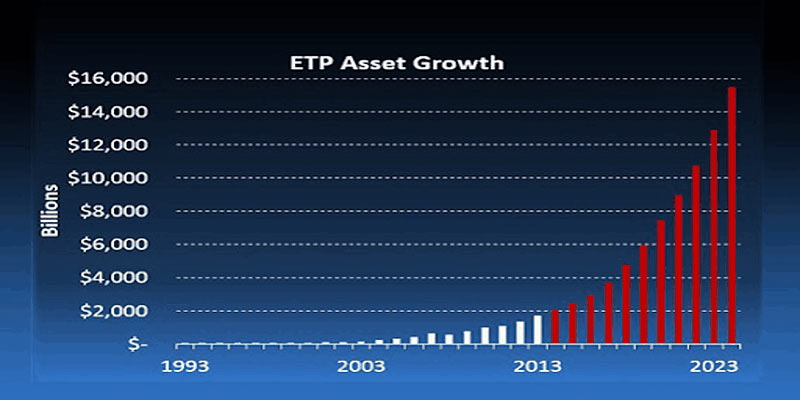Are you considering investing in exchange-traded funds (ETFs) but need help deciding which type to choose? ETFs enable investors to diversify their portfolios and save on transaction costs.
One common question regarding ETFs is whether to buy Preferred Stock or Bond Funds.
In this blog post, we’ll compare the two types of funds – analyzing features like benefits, risks, volatility levels, and investment goals -- to help inform your decision-making process for asset optimization.
Preferred Stock ETFs

Preferred Stock ETFs offer investors the opportunity to own a company without owning any of its common stock.
They typically pay out higher dividend yields than their common stock counterparts and have lower volatility, making them an attractive option for income-oriented investors.
However, they also tend to be more expensive since most preferred stocks come with redemption features that allow them to be redeemed early.
Bond ETFs

Bond ETFs are exchange-traded funds comprised of bonds from different issuers, such as governments or corporations. These funds can give investors diversified exposure to bonds and offer the potential for capital appreciation (or loss).
Because bond prices fluctuate significantly when interest rates change, bond ETFs may be more volatile than preferred stock ETFs.
Bond ETFs may not pay out dividends as regularly as preferred stocks, making them less attractive to income-oriented investors.
Benefits of Investing in Preferred Stock ETFs
- Diversification: Preferred stock ETFs offer investors the opportunity to gain exposure to various issuers, thus diversifying their portfolios.
- Lower Volatility: Preferred stocks tend to be less volatile than common stocks, making them suitable for conservative investors who wish to minimize risk while still earning returns.
- Higher Yields: Preferred stock ETFs usually pay higher dividends than their common stock counterparts, providing investors attractive yields.
- Redemption Features: Most preferred stocks have redemption features that allow them to be redeemed early, offering additional flexibility.
Benefits of Investing in Bond ETFs
- Diversification: Bond ETFs provide investors with diversified exposure to bonds from different issuers.
- Capital Appreciation: Bond ETFs have the potential for capital appreciation, making them attractive to more aggressive investors.
- Lower Management Costs: Compared to actively managed bond portfolios, bond ETFs tend to have lower management costs and fees due to their passive nature.
- Higher Liquidity: Bond ETFs generally offer higher liquidity than individual bonds, providing investors with easier access to funds when needed.
Risks of Investing in Preferred Stock ETFs
- Lower Returns: Preferred stocks tend to pay lower returns than common stocks, meaning they may be less lucrative investments over time.
- Credit Risk: Since preferred stocks are debt securities, there is always the risk of default on the issuer's part, resulting in a loss for investors.
- Tax Risk: Preferred stock ETFs may be subject to higher taxes than common stocks, depending on the type of income they generate.
Risks of Investing in Bond ETFs
- Interest Rate Risk: Bond prices fluctuate significantly when interest rates change; bond ETFs can be more volatile than preferred stock ETFs and other investments.
- Credit Risk: Similarly to preferred stocks, there is always the risk of default when investing in bonds since they are debt securities.
- Tax Risk: Bond ETFs may also be subject to higher taxes than other types of investments, depending on their structure and income generation.
Comparing Returns on Investment for Preferred Stock ETFs and Bond ETFs
Regarding ETFs, the primary goal is usually to gain returns on investment (ROI). Understanding how each type of fund performs in terms of ROI is important since this can help inform your decision-making process when selecting investments.
Preferred Stock ETFs offer investors a high level of security, stability, and dividend income. Preferred stocks are considered a hybrid between debt and equity instruments, meaning they can have characteristics of both.
The risk associated with Preferred Stock ETFs is relatively low compared to other investments, but the returns may also be lower than those offered by more aggressive investments.
Bond ETFs offer higher yields than preferred stock ETFs, but the associated risks are also higher. Bond ETFs invest in government-issued or corporate bonds, giving investors exposure to the bond market without purchasing individual securities.
Returns on investment from bond funds tend to outpace inflation, but they're not immune to fluctuation due to changes in interest rates or economic conditions.
It's important to understand that each type of fund has different risk levels and potential rewards. Before making an investment decision, it's essential to analyze each option's benefits, risks, volatility levels, and investment goals to make an informed decision that best suits your unique financial needs.
Preferred Stock ETFs vs. Bond ETFs: Who Should Invest?
When it comes to Preferred Stock ETFs and Bond ETFs, both carry unique benefits and risks. As such, when selecting which one to invest in, it is important to consider your investment goals and objectives.
Preferred Stock ETFs may be a good choice for investors looking for a steady income stream, as many pay more attractive dividend yields than corporate and government bonds.
These funds are typically less volatile than common stocks but can provide capital appreciation potential over time.
Preferred Stock ETFs may also be suitable for those who want to diversify their portfolios with income-generating investments and receive higher returns than traditional fixed-income securities.
Conversely, Bond ETFs may be appropriate for those investors seeking premium returns without taking on too much risk. Bond ETFs can offer stable returns from investment-grade debt but should not be considered a haven as default risks apply. I
Investors in Bond ETFs should actively monitor the creditworthiness of the underlying bonds issued by companies or governments in their portfolio.
Bond ETFs may also be suitable for those investors who want to diversify their portfolios with fixed-income investments, as they have relatively low correlations to stocks and commodities.
FAQs
Are preferred stocks better than bonds?
It depends on your investment goals and risk tolerance. Preferred stocks may offer higher returns but more volatility, whereas bonds generally provide lower returns but with a more stable, predictable cash flow. Consider your goals and risk tolerance before investing.
Are bonds riskier than preferred stock?
Bonds are generally less risky than preferred stock since they offer a more predictable cash flow and lower volatility. However, your investment goals, time horizon, and risk tolerance should be considered when deciding which type of fund to invest in.
Is the preferred stock a debt or equity?
Preferred stock is a hybrid asset containing elements of both debt and equity. It offers higher returns than bonds but with more volatility and risk. Consider your risk tolerance and investment goals before investing in preferred stock for optimal asset optimization.
Conclusion
Both preferred stock and bond ETFs offer investors unique advantages. Before selecting a fund, research the risks associated with each type to ensure it aligns with your investing goals. With an understanding of the benefits, potential risks, investment strategies, and volatility levels involved in both ETFs, you can decide which one is right for you.




